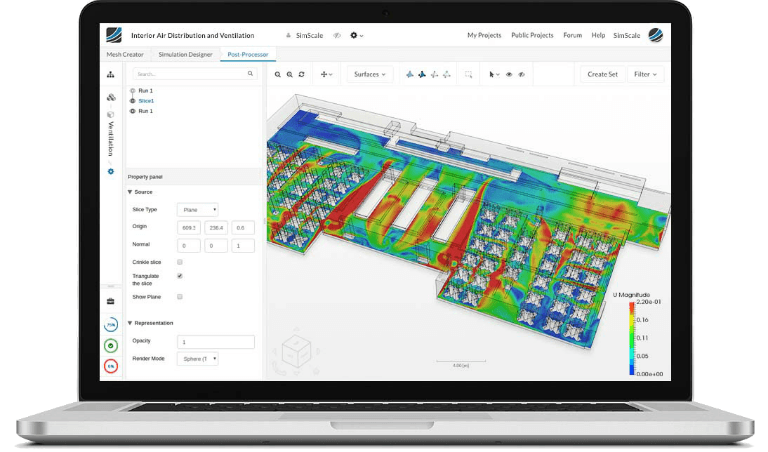Building simulation software has become a hot topic in the architecture, engineering, and construction industry as more and more AEC companies are integrating it into their building information modeling (BIM) efforts. For some time now, SimScale has been focusing on optimizing the platform specifically for AEC and HVAC applications.

As a company on the cutting edge of simulation software technology, we are delighted to see some of the largest AEC companies in the industry, including WSP and ARUP, adopting SimScale as their go-to software for virtual testing.
Solving Diverse Challenges in the AEC Industry
Civil engineering and building design engineers deal with extraordinary construction projects, that involve increasingly innovative shapes and new materials. The performance of such structures needs to be predicted accurately in order to achieve and maintain structural safety, reliability, and utility, as well as occupant and pedestrian comfort. When the flaws are discovered, amendments or design comparison studies need to be completed quickly and accurately. Any mistakes or poor decisions at this early conceptual stage of the design process can have significant time and cost implications on the final outcome. Large construction projects in particular often exhibit cost overruns and delays due to unforeseen events or design changes during construction.
The democratization of simulation software has marked a new era in the industry that was previously dominated by rules of thumb and unreliable hand calculations. Civil engineers began to change their approach to their projects, favoring realistic virtual tunnel testing that takes precise geometry and material properties into account. This approach allows them to reliably predict the behavior of the planned structure. For building and HVAC designers, it has become easier to ensure compliance with required Green Building and HVAC standards (e.g., ASHRAE 90.1 or ASHRAE 62.1).

The emergence of cloud-based solutions, such as SimScale, has further contributed to this industry-wide shift and solidified the role of simulation software as an indispensable tool of any civil or design engineer. Supercomputers, expensive software licenses, and sophisticated expertise in numerical analysis are no longer a requirement, which has opened up the potential of simulation technology to beginners in computer-aided engineering (CAE).
SimScale has been specifically developed to enable engineers and architects to virtually represent their conceptual designs and perform engineering analyses. The main applications solved with SimScale include:
- Wind load prediction
- Urban and pedestrian comfort
- HVAC system design
- Indoor air quality
- Smoke propagation, and more.
HVAC design engineers use SimScale to test designs involving multiple air flow inlets and outlets, diffusers and fans in commercial or industrial buildings, theaters, and data centers. This allows them to ensure thermal comfort, air quality, and energy efficiency while meeting sustainability standards. They also use simulation to model smoke propagation in closed spaces, such as parking lots, tunnels and underground stations. Civil engineers leverage the platform to test the sturdiness of their structures, buildings, and bridges, as well as to ensure the comfort and safety of the pedestrians in the area.
AEC Companies That Found Success with SimScale
Our users in the AEC industry range from world-renowned architecture firms to large engineering consultancy companies. We are proud to count the following prominent companies among our customers:

WSP is one of the world’s leading civil engineering firms. WSP has over 130 years of experience in various fields within the AEC industry and more than 500 offices throughout the world.

Arup is a multinational professional services firm operating in over 35 countries. It specializes in projects across the AEC industry, including architecture, sustainable building design, BIM, and more.

Aqseptence Group is a leading global supplier of engineering solutions for water filtration and separation for various industrial applications. It has been serving the industry for more than 100 years.

FSE Engineering Holding Limited is a prominent mechanical and electrical engineering services firm based in Hong Kong, operating across many industries including AEC.

Power Engineers is a global consulting engineering firm providing solutions in a wide range of industries. It is a worldwide leader in energy-efficient and renewable energy design.

L&T Construction is India’s largest engineering and construction organization. It ranks among the world’s top 30 contractors and has been transforming city landscapes for the past seven decades.

Kohler Ronan LLC is a multi-disciplined engineering consultancy with extensive expertise in the field of sustainable and green building design, collaborating with prominent architectural firms from across the world.
If you want to read more about how CFD simulation helps engineers and architects improve building performance, download this free white paper.



